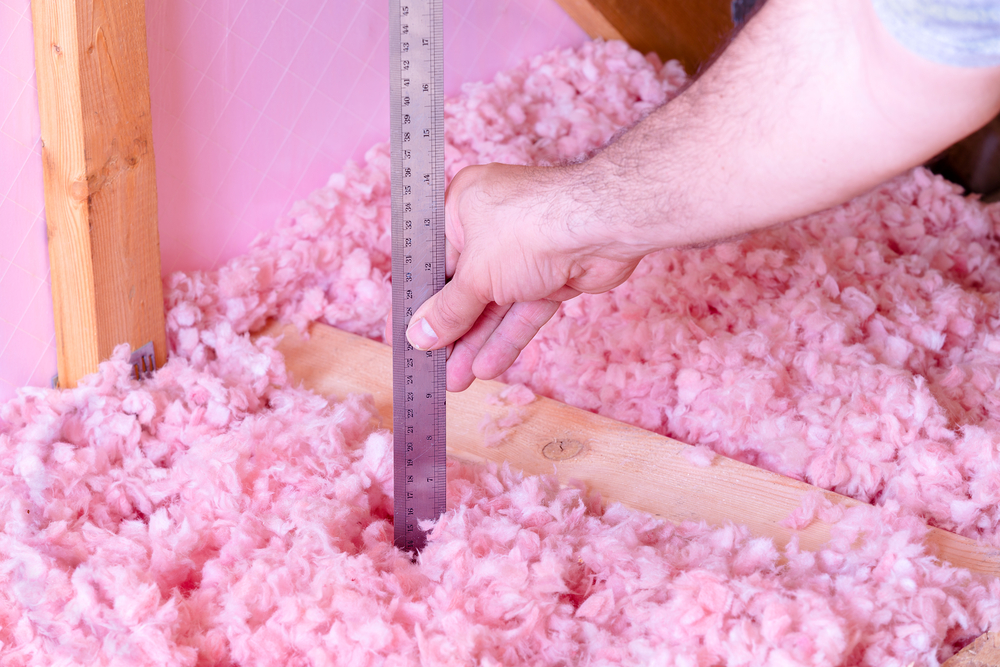When selecting insulation material, many people try to opt for one with the highest R-value or R-rating. Generally, insulation is rated by its thermal resistance value, also known as the “R-value.”
The higher the R rating, the better its thermal performance. But that’s not to say you always need the highest R-value. Sometimes, R ratings in the range of 5 to 10 also suffice.
But when? Let’s find out.
What Is R5 Insulation?
Any insulation material with an R-value of 5 is known as R5 insulation. Commonly used insulation materials with an R-value of 5 include fiberglass batts and rolls, closed-cell spray foam, and some rigid board insulations.
Where Is It Used?
R5 insulation is usually the minimum requirement for exterior walls in most climates and can be improved upon for better energy efficiency.
If you look at the R-value insulation chart by the Home Depot for different climatic zones, you will notice that R5 insulation is not mentioned anywhere for use.
The minimum R-value needed for insulation in most zones is R13. However, that doesn’t mean R5 is useless. It can still be used in many applications. Here are a few of them:
The critical thing to understand is that you cannot use R5 insulation on its own. Instead, it is used as an additional layer.
For instance, the US Department of Energy says that you can use R20 in uninsulated wood-frame walls with an addition of R5 of continuous insulation. You’d be surprised to know that this additional layer can increase your energy savings by 20% to 40%.
R5 Insulation Depth
The depth of R5 insulation depends on the material you choose. For example, if you are using fiberglass batts or rolls for your insulation, then the depth would be at least 1.06 inches.
What Is R10 Insulation?
Just like R5 insulation, R10 insulation is also used in many applications to increase energy efficiency. The difference between the two is that the R-value of R10 insulation is higher than that of R5 insulation.
The most common materials with an R-value of 10 include rigid foam board insulation and spray foam. These materials are also often used in the same applications as R5 insulation, adding more depth to your insulation for better efficiency.
Where Is It Used?
Again, if you look at the table by the US Department of Energy, you’ll see that they have recommended adding continuous R10 insulation to insulated wood frame walls in Zone 4 through 8.
Similarly, you can also add a combination of R13 and R10 in uninsulated wood-frame walls in Zones 4 through 8. The purpose of adding extra insulation is to prevent energy loss and increase efficiency in hotter climates.
Besides the aforementioned places, you can also use R10 insulation in:
- Cavity walls
- Wall furring
- Sheathing
- Precast concrete
- Perimeter or foundation
- Crawlspace
Opt for polystyrene insulation in these areas since it is moisture-resistant and exceptionally durable.
R10 Insulation Depth
R10 insulation has a thickness of 2-1/8″, which is two times the thickness of R5 insulation. So, make sure you have enough room to fit the material in the wall or ceiling before opting for this option.
Which One Should You Choose: R5 or R10?
The insulation material you choose for your property will depend on a few factors. We discuss them below.
Climatic Zone and Area
Which climate zone do you live in, and which area of your home do you want to insulate? If you live in any zone between 4 and 8 and wish to insulate uninsulated wood-frame walls or insulated wood-frame walls, you should choose between R5 and R10 based on the other R-value you’re using.
For example, if your current insulation’s R-value is R20, you only need an additional R5 insulation. But if it is R13, then you should opt for the additional R10 insulation to make sure your property stays cooler during summer.
Building Material
The building material also matters when choosing between R5 and R10 insulation. Polystyrene is excellent for moisture resistance and durability, whereas fiberglass insulation can be effective in fire protection. Consider the material used to build your property before selecting an insulation type.
Cost
As a rule of thumb, as the R-value of an insulation material increases, its price does, too. So, if you’re planning to get R10 insulation, be prepared to pay more.
Another thing that affects the cost is the insulation material. Some materials, such as fiberglass, are relatively inexpensive. However, more advanced materials, such as polystyrene, will cost you more.
Is R10 Insulation Better Than R5?
In all honesty, we would not use the term “better” to differentiate between both insulation materials. However, we will say that R10 has a higher thermal resistance and higher R-value, which means it offers better protection from outdoor temperatures.
But it’s not suitable for all and every application. It’s essential to do thorough research and check your area’s building codes to determine if R10 will be the right choice for your residential insulation needs.
When Should You Upgrade From R5 to R10?
The answer depends entirely on your current insulation’s R-value. If you are already using a high-R insulation material with an R-value of at least R15, upgrading to R10 won’t make much difference.
But if you’re currently using an insulation material with a lower R-value, such as R13 or lower, then it is recommended that you upgrade to the higher R-value of R10 to maximize thermal efficiency.
Similarly, if you live in an area with extreme weather conditions, such as high temperatures or cold winters, it’s best to opt for a higher R-value, like R10, for the sheathing and wall cavities. But if you live in a mild climate with moderate temperatures, an R5 insulation material may be sufficient.
We recommend discussing your insulation requirements with a contractor before you head out for insulation shopping. After all, insulation is expensive, and you don’t want to waste your money on something that won’t work for your home.





